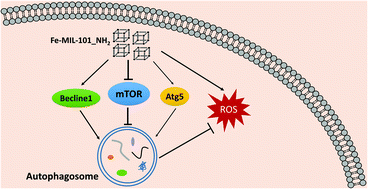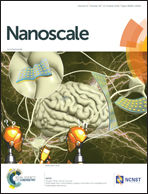Metal–organic frameworks induce autophagy in mouse embryonic fibroblast cells†
Abstract
Autophagy is the lysosomal-dependent degradation process of intracellular substances in adaptation to environmental or developmental changes. It plays an essential role in maintaining cellular homeostasis while its dysfunction is involved in various human diseases. The regulation of autophagy has attracted more and more attention with the promise for improving treatment of diseases as a potential therapeutic target. Metal–organic frameworks (MOFs), as emerging biomaterials, have been investigated in the biological and biomedical fields in recent years. Therefore, it is interesting and significant to study the effects of MOFs on living cells from safety aspects as well as the therapeutic viewpoint, especially their effects on autophagy which have not been reported yet. In this study, the effects of Fe-MIL-101_NH2 on mouse embryonic fibroblasts (MEFs) were investigated and the potential applications of these nanoparticles in the regulation of autophagy were explored. Our results demonstrated that Fe-MIL-101_NH2 induced cytoprotective autophagy in MEFs instead of cytotoxicity. The activation of autophagy kept reactive oxygen species from accumulating, which protected MEFs from apoptosis. Further exploration of the possible mechanisms of MOF-induced autophagy revealed that the inhibition of mTOR pathway as well as the enhancement of Becline1 and Atg5 contributed to autophagy induction. Our study uncovered the autophagic effects and mechanistic insights of MOFs, which will be beneficial and meaningful to the safety evaluation and the reasonable and effective usage of MOFs.

- This article is part of the themed collection: 2018 Nanoscale HOT Article Collection


 Please wait while we load your content...
Please wait while we load your content...